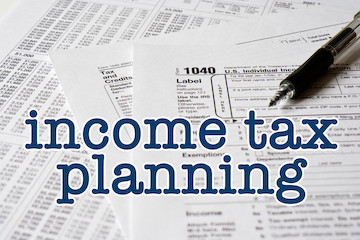2012 Year-End Investment Tax Planning: A Challenging Task
publication date: Sep 7, 2012
The No-Load Fund Analyst (NLFA) recently provided a useful update on year-end tax planning regarding your investments for 2012. This year holds even more uncertainty than usual due to the potential for major tax changes caused by the expiration of some tax rules and the beginning of others. Add to that a divided federal government and a November election and the range of possible outcomes and differing rules can quickly become overwhelming.
That said, the likely outcomes probably aren’t that complicated when you consider what’s going on in Washington and what’s likely to occur. I don’t see massive tax increases in 2013 for the simple reason that at a minimum, the Republicans are almost a sure bet to hold onto their sizeable majority in the House of Representatives. This will block any major tax increase. The only scenario under which we could see large increases in the tax rates applied to investment returns would be in the Democrats captured both houses of Congress as well as the Presidency. The chances of this happening are close to zero based upon recent polling.

In the meantime, here’s what NLFA has to say:
"The uncertainty surrounding the possible expiration of the Bush-era tax cuts will make 2012 year-end tax planning challenging. If these tax cuts do expire as currently scheduled, taxes on income, capital gains, dividends, estates, and gifts will increase in 2013. Additionally, as a result of the Health Care and Education Reconciliation Act of 2010 (Obamacare), we will see new Medicare taxes on earned income and investment earnings in 2013.
Given the real possibility of higher taxes in 2013, it makes sense to consider tax planning moves that can lessen the impact. We share such strategies below, but recommend consulting with your tax advisor in December as the tax laws may change before year-end.
Income/Deduction Planning
Income tax rates are scheduled to increase in 2013, so accelerating income into 2012 or deferring tax deductions into 2013 may make sense for some taxpayers. For example, the top tax rate on ordinary income is scheduled to increase from 35% to 39.6% in 2013…
If ordinary income tax rates do increase in 2013 as scheduled, the following strategies that accelerate income into 2012 or defer deductions into 2013 should be considered:
- Accelerate business income and/or stock option income into 2012
- Consider a Roth IRA conversion in 2012 (Note: With this planning technique, traditional IRA assets are transferred to a Roth IRA and income tax is paid on the transferred amount in the year that the transfer occurs. If all the requirements are met, all future Roth IRA account earnings are exempt from income tax.)
- Delay itemized deductions such as charitable contributions, state income tax payments, and property tax payments to 2013
- Defer deductible business expenses to 2013
Hidden taxes, such as the phase out of the tax deductions for personal exemptions and itemized deductions for high-income earners, are scheduled to return in 2013 due to the expiration of the Bush-era tax cuts. Depending on your income level and number of personal exemptions, your tax rate could increase by up to 3% starting in 2013.
Earned income is also subject to Social Security and Medicare taxes. Currently, the Medicare payroll tax is 2.9% on all wages—with the worker and his employer each paying 1.45%. Starting in 2013, as part of the Health Care Act, individuals will pay an additional 0.9% on earned income over $200,000 ($250,000 if married, filing jointly).
Capital Gains Planning
With capital gains taxes increasing, investors should consider accelerating capital gains into 2012 to take advantage of these lower rates. Likewise, investors may be better off deferring the recognition of capital losses to future years when they may have a greater marginal tax benefit.
Starting in 2013, the Health Care Act adds a 3.8% Medicare tax on investment income (including taxable interest, dividends, and capital gains) for individuals with modified adjusted gross incomes (MAGI) in excess of $200,000 for individuals and married taxpayers filing joint returns with MAGI in excess of $250,000.
Gift Planning
Individuals can transfer up to $13,000 ($26,000 for married couples) per recipient each year without any gift tax consequences. Gifts in excess of that amount are sheltered from gift tax by an individual’s lifetime gift exemption. The individual gift, estate, and generation-skipping tax (GST) exemptions are each currently $5,120,000 ($10,240,000 in aggregate for a married couple). These exemptions are scheduled to drop to $1,000,000 ($2,000,000 in aggregate for a married couple) on January 1, 2013, and the top gift, estate, and GST tax rate is scheduled to increase from 35% to 55%.
Individuals with large estates and who plan to transfer more than $1,000,000 of assets to their heirs should consider making gifts in 2012 to take advantage of the large gift tax exemption. Taxable gifts beyond the gift tax exemption amount made in 2012 may also be beneficial as they avoid the 20% increase in the gift tax rate in 2013."



